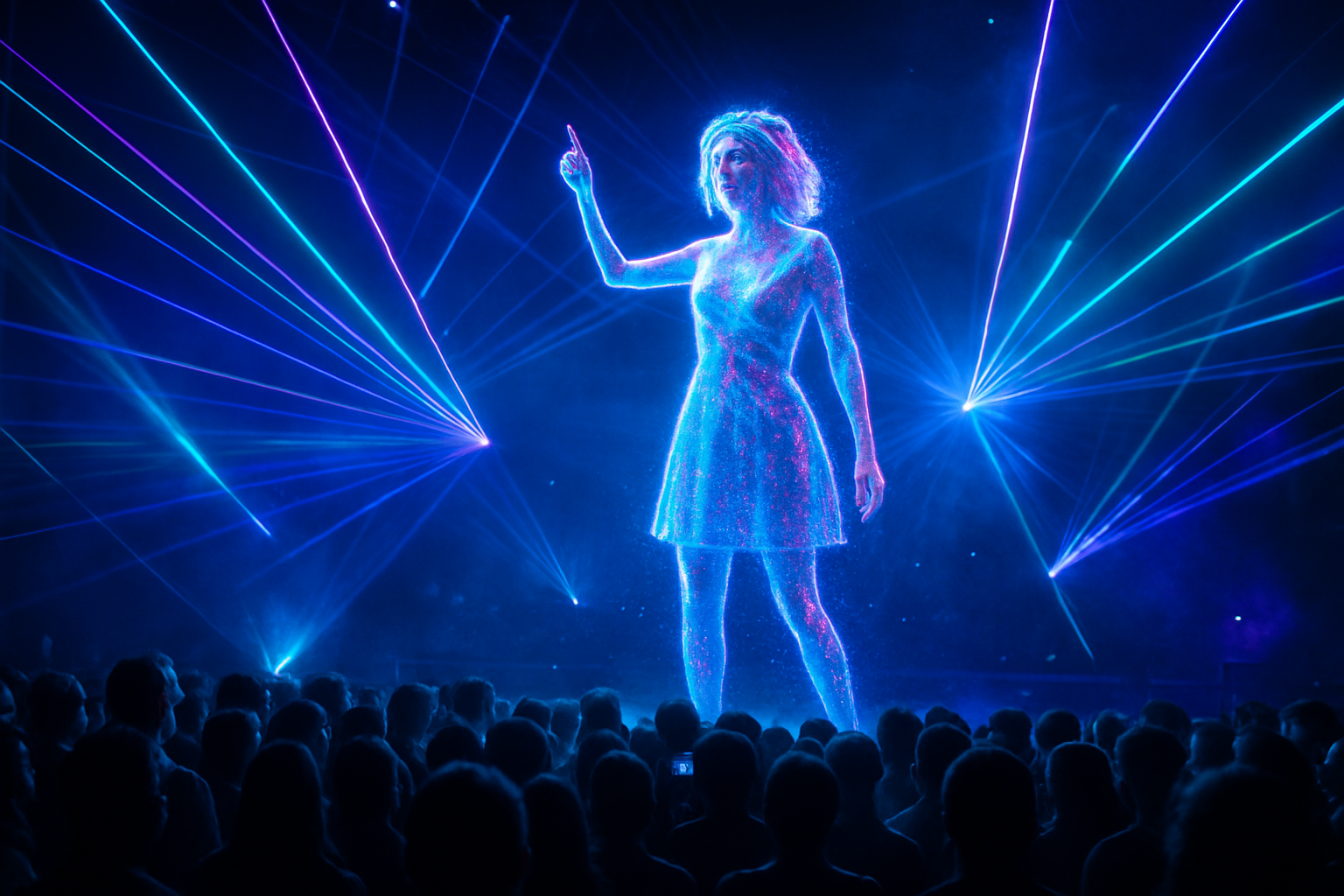The Kaleidoscopic World of Holographic Concerts
In a dazzling fusion of music and technology, holographic concerts are reshaping the live entertainment landscape. This groundbreaking phenomenon merges cutting-edge visual effects with beloved musical performances, creating an immersive experience that blurs the lines between reality and illusion. As artists both living and deceased take to virtual stages worldwide, audiences find themselves captivated by these ethereal shows that defy the boundaries of time and space.

Technological Marvels Behind the Magic
At the heart of holographic concerts lies a complex interplay of lasers, mirrors, and high-definition projectors. The Pepper’s Ghost illusion, a 19th-century theater technique, serves as the foundation for many of these spectacles. Modern advancements have refined this method, incorporating AI and motion capture to create lifelike movements and interactions. Companies specializing in holographic technology continue to push the boundaries, developing systems that can project three-dimensional images visible from multiple angles without the need for special glasses.
Resurrection of Legends and New Frontiers for Living Artists
One of the most controversial aspects of holographic concerts is the resurrection of deceased artists. From Whitney Houston to Roy Orbison, holographic tours have allowed fans to experience the magic of performers long after their passing. This trend raises ethical questions about posthumous performances and the rights of estates to control an artist’s legacy. For living artists, holograms offer the opportunity to be in multiple places at once, potentially revolutionizing touring schedules and expanding global reach.
The Economic Impact and Industry Shift
The advent of holographic concerts has sent ripples through the music industry’s economic structure. Traditional touring models are being reevaluated as artists can now perform simultaneously in multiple venues worldwide. This shift has implications for everything from ticket sales to merchandise revenue. Venue owners and promoters are adapting by upgrading their facilities to accommodate holographic technology, while new companies specializing in digital performances are emerging as key players in the entertainment landscape.
Cultural Reception and Future Prospects
Public reaction to holographic concerts has been mixed, with some hailing them as revolutionary while others view them as gimmicky or even disrespectful to artists’ legacies. Critics argue that these performances lack the spontaneity and energy of live shows, while proponents celebrate the democratization of access to iconic performances. As technology continues to evolve, the potential for increasingly sophisticated and interactive holographic experiences grows. The future may see holographic performers capable of real-time interaction with audiences, further blurring the line between virtual and physical presence.
Legal and Ethical Considerations
The rise of holographic concerts has sparked a myriad of legal and ethical debates. Questions of intellectual property rights, performance royalties, and the moral implications of digitally resurrecting artists are at the forefront of industry discussions. Lawmakers and entertainment lawyers are grappling with how to regulate this new form of performance, balancing technological innovation with respect for artistic integrity and personal rights.
Environmental Impact and Sustainability
As the world becomes increasingly conscious of environmental issues, the sustainability of holographic concerts is coming under scrutiny. While these virtual performances can reduce the carbon footprint associated with traditional touring, the energy consumption of the technology itself is significant. Industry leaders are exploring ways to make holographic concerts more eco-friendly, from developing energy-efficient projection systems to utilizing renewable power sources for performances.
The Role of Artificial Intelligence in Holographic Artistry
Artificial intelligence is playing an increasingly crucial role in the creation and execution of holographic concerts. AI algorithms are being used to analyze artists’ past performances, recreating their mannerisms and vocal nuances with uncanny accuracy. This technology opens up possibilities for creating new performances by deceased artists, raising questions about the nature of creativity and authorship in the digital age. As AI continues to advance, it may soon be possible to generate entirely new holographic artists, blending the talents of multiple performers or creating unique virtual entities.
Holographic Concerts Beyond Music
While music has been at the forefront of holographic performances, the technology is expanding into other realms of entertainment. Theatre productions are experimenting with holographic actors, allowing for elaborate stagings that were previously impossible. In the world of public speaking, historical figures are being brought to life for educational purposes, enabling students to interact with virtual representations of important personalities from the past. The potential applications are vast, from enhancing museum exhibits to revolutionizing corporate presentations and political campaigns.
The Global Perspective: Cultural Implications and International Reception
Holographic concerts are receiving varied receptions across different cultures and regions. In some countries, they are embraced as cutting-edge entertainment, while in others, they face resistance due to cultural or religious beliefs about representation and the afterlife. The global nature of these performances is also challenging traditional notions of cultural exchange, as artists can now virtually perform in countries they might never have visited physically. This technological globalization of performance art is reshaping how we think about cultural boundaries and artistic accessibility on an international scale.





